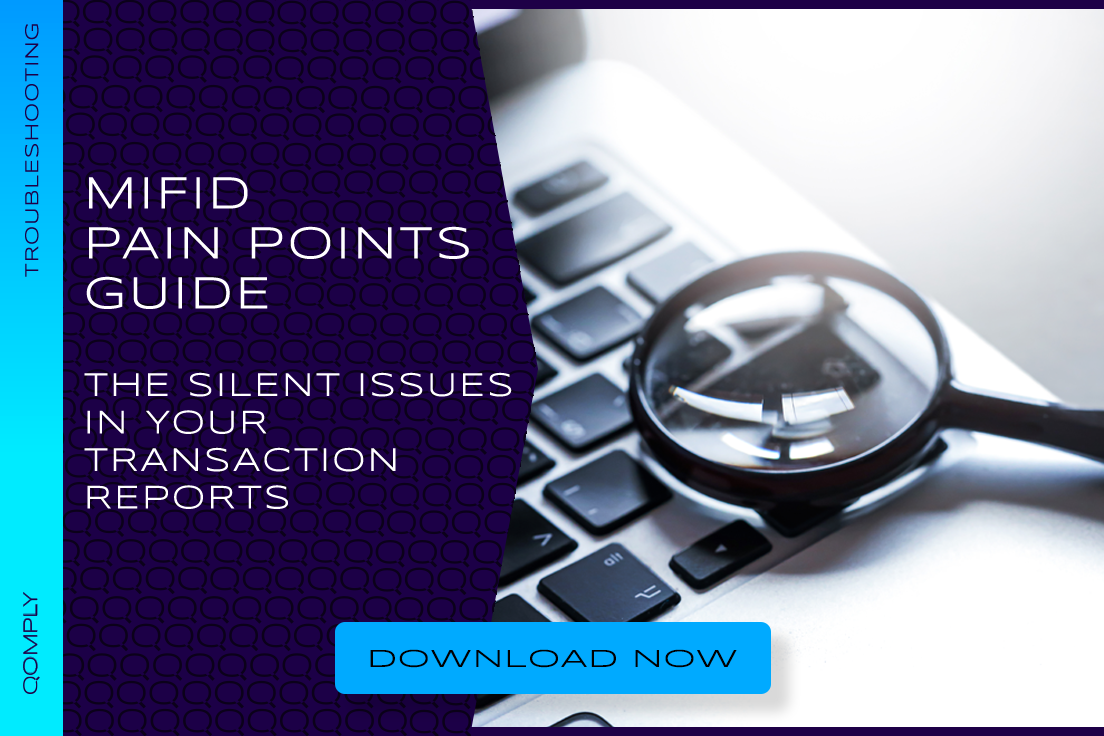MIFID Shake-up Planned
ESMA Announces Changes to MiFID Transaction Reporting
 Author: Sophia Fulugunya
Author: Sophia Fulugunya
Director of Transaction Reporting
Released on 09 April 2024
Updated on 05 November 2024
Last week, ESMA formally announced significant revisions to the MiFIR reporting framework that will impact MIFID investment firms. This shake-up is a result of ESMA's recent MiFIR review.
EU MiFIR Reporting Revisions
Whilst ESMA's latest document was brief, the message was clear – firms will be required to undertake significant work in order to comply with the new rules.
ESMA acknowledges that there will be substantial changes to the financial instruments reference data reporting framework, with a direct impact on the Financial Instrument Reference Data System (FIRDS). Currently, FIRDS data forms the foundation of MiFID transaction reports, serving as the central element in determining reportable transactions. The proposed amendments to level one, specifically Article 26 of MiFID, will modify the reporting scope. These revisions involve excluding certain Traded on a Trading Venue (TOTV) derivatives not executed on the venue and incorporating specific Over-the-Counter (OTC) derivatives. This leaves us with several questions:
ISINs, UPIs and Harmonisation
ESMA has stated that OTC derivatives identifying reference data shall be based on a globally agreed identifier and any other identifying reference data.
Other global reporting regimes, such as ASIC, EMIR, and CFTC, rely on a Unique Product Identifier (UPI) for derivative reporting. ESMA might be considering adopting the UPI framework, potentially aligning MiFID reporting with global standards. If this materialises, it could benefit firms in the long term. However, the initial transition would necessitate substantial IT adjustments—a challenge ESMA has recognised and pledged to assess the impact on investment firms' reporting systems.
If a global identifier is used for OTC derivatives, does this mean that exchange traded instruments will continue to be reported with an ISIN? If so, this presents an additional complexity for firms as they map instruments to an identifier. It could be said that ESMA is planning to align with other transaction reporting regimes. For example, in EMIR Refit, an ISIN is used for derivatives traded on a RM, MTF, OTF or SI and a UPI is used to identify OTC derivatives.
The regulator acknowledged that some changes will need to be made to the ISIN attributes of specific instruments, for example, replacing the ‘Expiry Date’ with the ‘Forward Term of Contract’ for in-scope interest rate swaps in order to better identify the instrument. Therefore, there may be changes to the data contained with the construct of an ISIN.
In January 2024 ESMA issued a response to its Consultation on OTC derivative identifiers that provides answers to some of the questions raised. Even though the Consultation pertains to the transparency regime, the data reporting regimes within MiFIR are interconnected. ESMA say they aim to “streamline and align reference data for transparency and transaction reporting”. In its January response, ESMA sets out a preference for maintaining the OTC ISIN as the instrument identifier rather than the UPI. The reasoning for choosing the ISIN is to maintain harmony across EU reporting regimes and also to maximise data quality as the ISIN provides more granular information.
ESMA aims to achieve interoperability between the EU data reporting obligations thereby facilitating a more “holistic and consistent approach to data”.
What Are The Other Changes?
In addition to this, the public statement specifies adjustments in reported information. The following fields will be added:
- The effective date
- Designation of the entity under reporting obligation
- Transaction identification code – the potential replacement for the complex INTC convention:
We know that this is an area that firms struggle with and so I personally welcome anything that may make it easier for firms to report aggregated orders. Although again, this will require substantial changes to trade capture and reporting systems.
The fields below will be eliminated and is aligned with the supervisory forbearance that the FCA has previously issued.
- Waivers
- Shortselling indicator
In Conclusion
The pace of regulatory reporting changes remains steady. While the FCA has yet to formally announce specific changes to UK MiFIR, their latest business plan indicates a heightened focus on combating market abuse through enhanced regulatory measures and advanced analytics. This suggests that the UK authority is gearing up to intensify scrutiny of reported data quality, which will be pivotal for both initiatives.
The anticipation of change has been long-standing, especially after the amended MiFIR was confirmed. However, uncertainties persist regarding the extent of these changes and the timelines for their implementation. Firms involved in dual reporting to both ESMA and the FCA must remain vigilant, as ongoing divergence between the two regulatory bodies increases the risk of misreporting.
About Qomply
Qomply takes away the pain by getting transaction reporting right the first time.
Qomply’s technology automatically executes a sophisticated matrix of rules and scenarios across reports from field-level to business-logic level. With thousands of validation rules, Qomply easily exceeds the 250 validation rules set forth by the regulators.
Firms are empowered to conduct real-time checks as well as retrospective checks – making Quality Assurance, Remediation Exercises and Day-to-Day reporting straightforward.
Qomply’s easy-to-use dashboard empowers firms to send their reports directly to the regulator – bypassing costly fees with efficient, straight-through processing power.
This all leads to the fewest number of steps in the pipeline of reporting and ensuring reports are right the first time.
For more information, please contact Qomply, on +44 (0) 20 8242 4789 or info@qomply.co.uk
Follow Qomply on social media on Twitter (https://twitter.com/QomplyRegTools) and LinkedIn (https://www.linkedin.com/company/qomply/)


